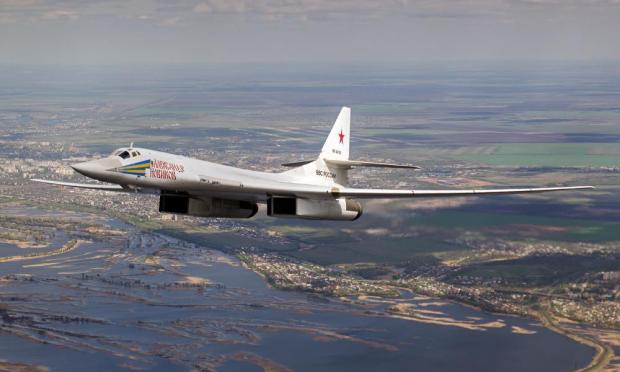Putin has said he has put Russia's nuclear arsenal on high alert, but there has been no noticeable change in the country's nuclear posture or unusual movements of its weapons.
At the same time, together with Alexander Lukashenko, they have been hinting at some kind of nuclear base agreement for some time. More than a year ago, the leader of Belarus held a referendum to change the constitution to allow it.
What Putin is threatening this time is to take two more steps down that road, starting training Belarusian aircrews in early April to fly nuclear bomb-carrying aircraft and completing storage facilities for tactical nuclear weapons by July 1st.
At the same time, the Russians reportedly upgraded 10 Belarusian Air Force aircraft for use as nuclear weapons carriers. The Russian Federation claims that all these steps apparently do not violate the terms of the Strategic Arms Reduction Treaty, which the Kremlin either fulfills or not.

It should be noted that the storage of nuclear weapons on the territory of Belarus is a "response" to the transfer to Ukraine of armored shells containing depleted uranium from Great Britain.
It is reasonable to assume that Putin and Lukashenko can use one of the facilities for the storage of nuclear weapons built on the territory of Belarus during the USSR. In any case, it makes more sense to use the existing ones than to build a new base from "scratch". The "classic" storage of nuclear weapons is an entire complex of above-ground and underground concrete capital structures equipped for nuclear warhead operations.
There is publicly available information on at least three facilities in Belarus, which during the USSR had the status of the so-called "central storage base" of nuclear weapons ("CSB") and were under the 12th General Directorate of the Ministry of Defense in Moscow (department of the Russian ( former Soviet) Ministry of Defense.
It is responsible for safekeeping, technical maintenance, transportation, delivery, issuance, disposal, etc. of the state's nuclear arsenal, as well as testing nuclear payloads, "Gomel-30" , and similar "CSB" near the airport in Baranovichi and the airport "Machulyshchi".
At the airport in Belarus "Machulyshchi", Russian airborne early warning and control aircraft A-50U as well as MiG-31K supersonic missile aircraft are based
It is worth recalling that until 1994, a regiment of Tu-22K missile carriers, armed with Kh-22 missiles (Soviet-made long-range anti-ship missile, designed for use against aircraft carriers and carrier battle groups, with either a conventional or nuclear warhead), was located in it airport. It is also worth recalling that, the Russians started using the Machulischy airfield in the fall of 2021, during the "Zapad-2021" military exercises.

Therefore, there is reason to assume that if Putin is not bluffing, then it is the "Machulyshchi" airport that the Kremlin can use to deploy nuclear weapons on the territory of Belarus, because there are the best "launch conditions".
If the Russians build a new facility for the storage of nuclear weapons on the territory of Belarus, which will already be under the 12th General Directorate of the Ministry of Defense of the Russian Federation, then this facility will have to be "stuffed" with nuclear warheads, and this process will be noticeable.
This, in turn, Putin can use for another round of "nuclear blackmail", especially in the context of the successes of the Armed Forces of Ukraine during the spring-summer offensive campaign.
But if he does, then the transfer of Tomahawk missiles from the United States of America to Ukraine will hardly take place. Instead, the White House is more likely to approve Poland's application to join the Nuclear Sharing program announced in October 2022. A positive response in Warsaw from Washington to this request would mean that Poland could become the sixth country in Europe where the US will host nuclear weapons.
Notably, there is a long-standing dispute between Moscow over US nuclear exchange agreements with five of its allies: Germany, the Netherlands, Belgium, Italy and Turkey. Under this agreement, the US stores B61 gravity bombs (about 100 in total) in these countries and their crews are trained to fly planes that carry them in the event of a nuclear war.
However, for Russia what is happening has a clear political meaning. The development of tactical nuclear weapons in Belarus is a message from Moscow to the United States and the EU that, the creation of an anti-Russian proxy force by Kiev, the disarmament of Ukraine, and the expansion of the American military presence in Eastern Europe, they increase the risks of a direct conflict between Russia and NATO, a protracted confrontation and an arms race.



